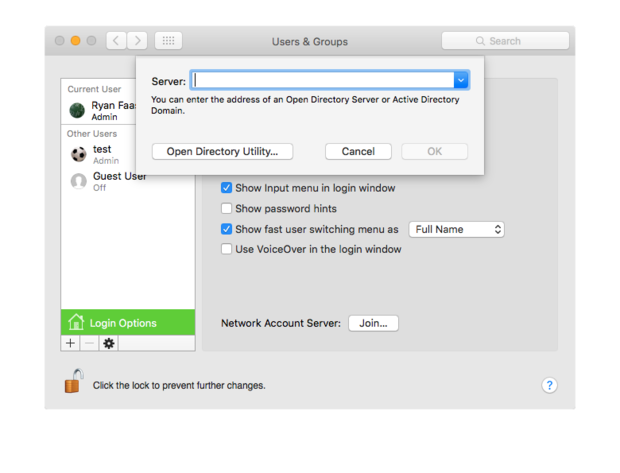
- #MAC OS ACTIVE DIRECTORY TRAINING HOW TO#
- #MAC OS ACTIVE DIRECTORY TRAINING MAC OS X#
- #MAC OS ACTIVE DIRECTORY TRAINING PASSWORD#
- #MAC OS ACTIVE DIRECTORY TRAINING WINDOWS#
#MAC OS ACTIVE DIRECTORY TRAINING MAC OS X#
You can either use Directory Utility or dsconfigad to bind a Mac OS X client computer to an Active Directory domain. Configuring Mac OS X to Log In Using Active Directory
#MAC OS ACTIVE DIRECTORY TRAINING HOW TO#
You will learn how to overcome problems with your initial bind to Active Directory, and you will learn troubleshooting techniques for login problems with an Active Directory user account. In this chapter you will learn how to use both Directory Utility and the command line to bind to Active Directory, and to modify the default settings for the Active Directory plug-in to enable login and access to a network home folder.

#MAC OS ACTIVE DIRECTORY TRAINING WINDOWS#
#MAC OS ACTIVE DIRECTORY TRAINING PASSWORD#

X : create as mobile account account non-boot volumes. x : create as external account on non-boot volumes. q quota : max size in bytes of FileVault home. e encrypt : encrypt new home with FileVault. A user password is required to create a FileVault home. h homepath : user home path Default is "/Users/". If you drove your car into a wall because you didn't learn how to apply the break correctly is it the cars fault or createmobileaccount -n username ] | ] | ] You can't blame the Mac for not taking the time to read the OS X Reference Manuals (Open Directory Manual, page 121). That's what admins are for, to make sure it gets done correctly. An end user shouldn't be adding any system to a network, ever.

But like any technology you have to use it correctly. In reality they have less problems (per CIO magazine, NJMO). As long as the NIC is enabled and it's set to DHCP it'll pick up an address. I'm betting Bret's example was user error as well. Since you're an AD shop, if you setup an OD Master in a golden triangle, you can pass these system settings to all the Macs on your network using the Workgroup Manager (WGM). Just make sure to login as "other" or set the login options to require username and password. It works fine for other network users who have never logged into the Mac (a new "mobile" local account is created and they are able to login both on the AD network and off).ĭoes anyone know of a way to remove the user "user profile" I created so i can log in again and create the local "mobile" user account? If I logged into the Mac prior to enabling "Create mobile account at login” I am not able to login.


 0 kommentar(er)
0 kommentar(er)
